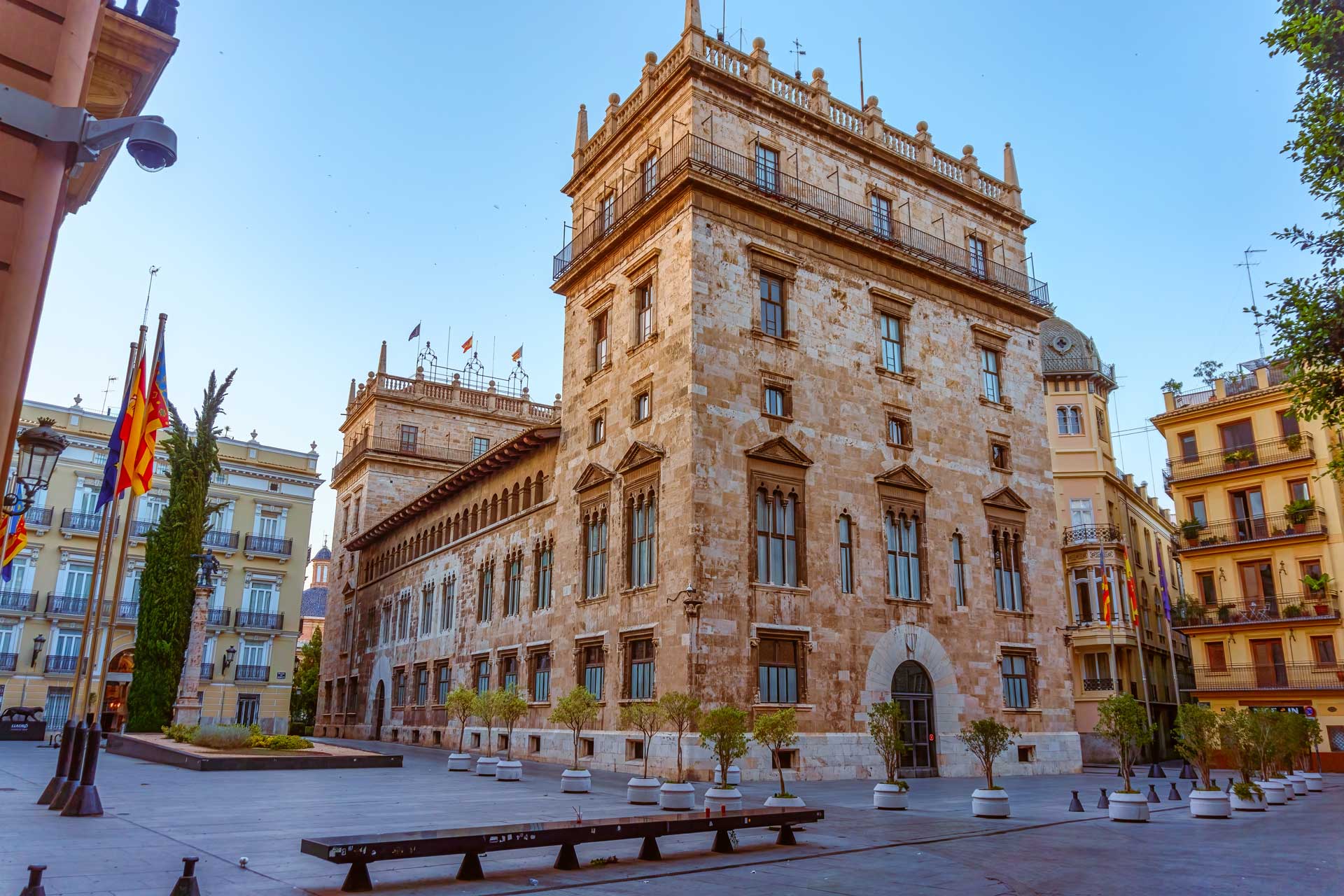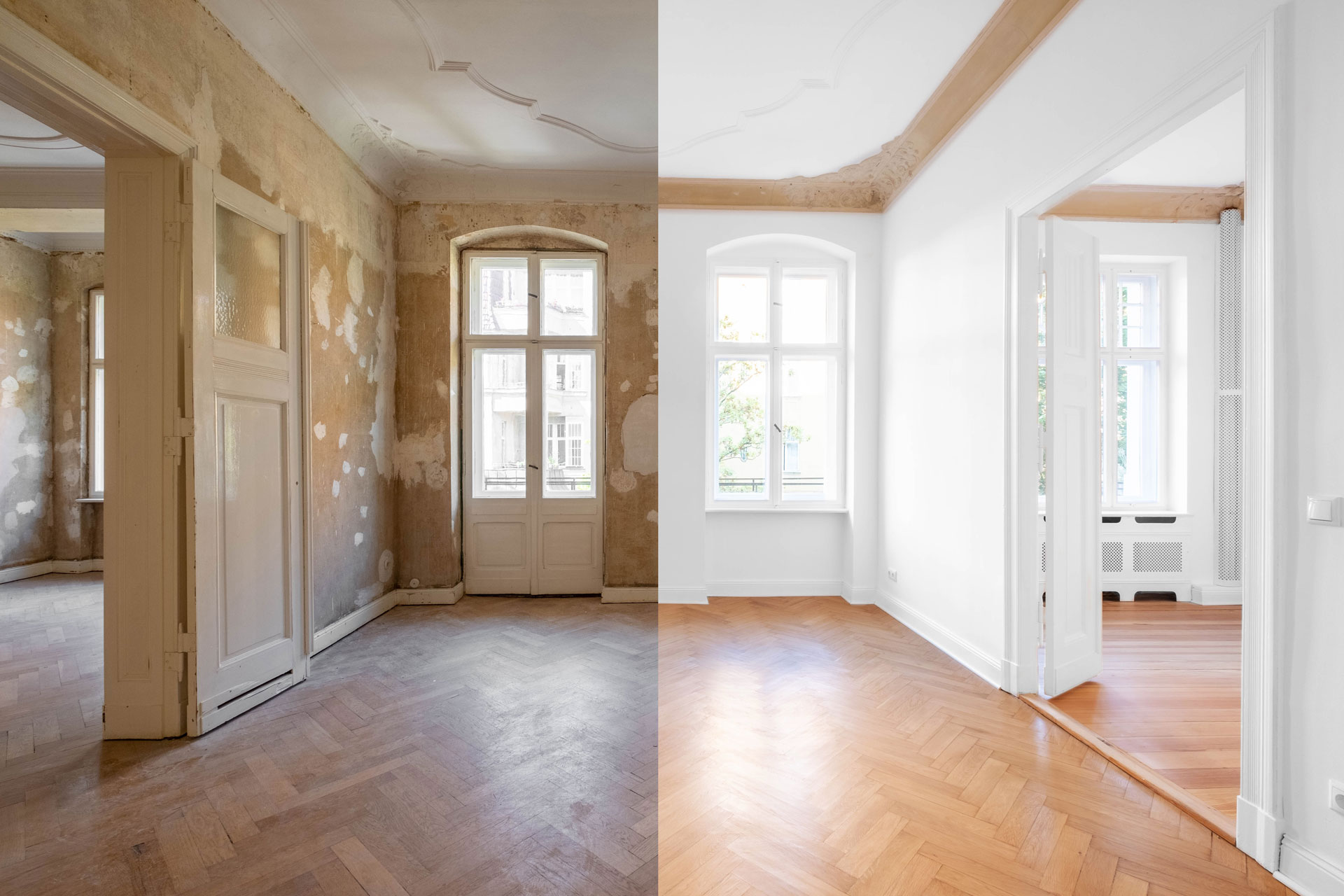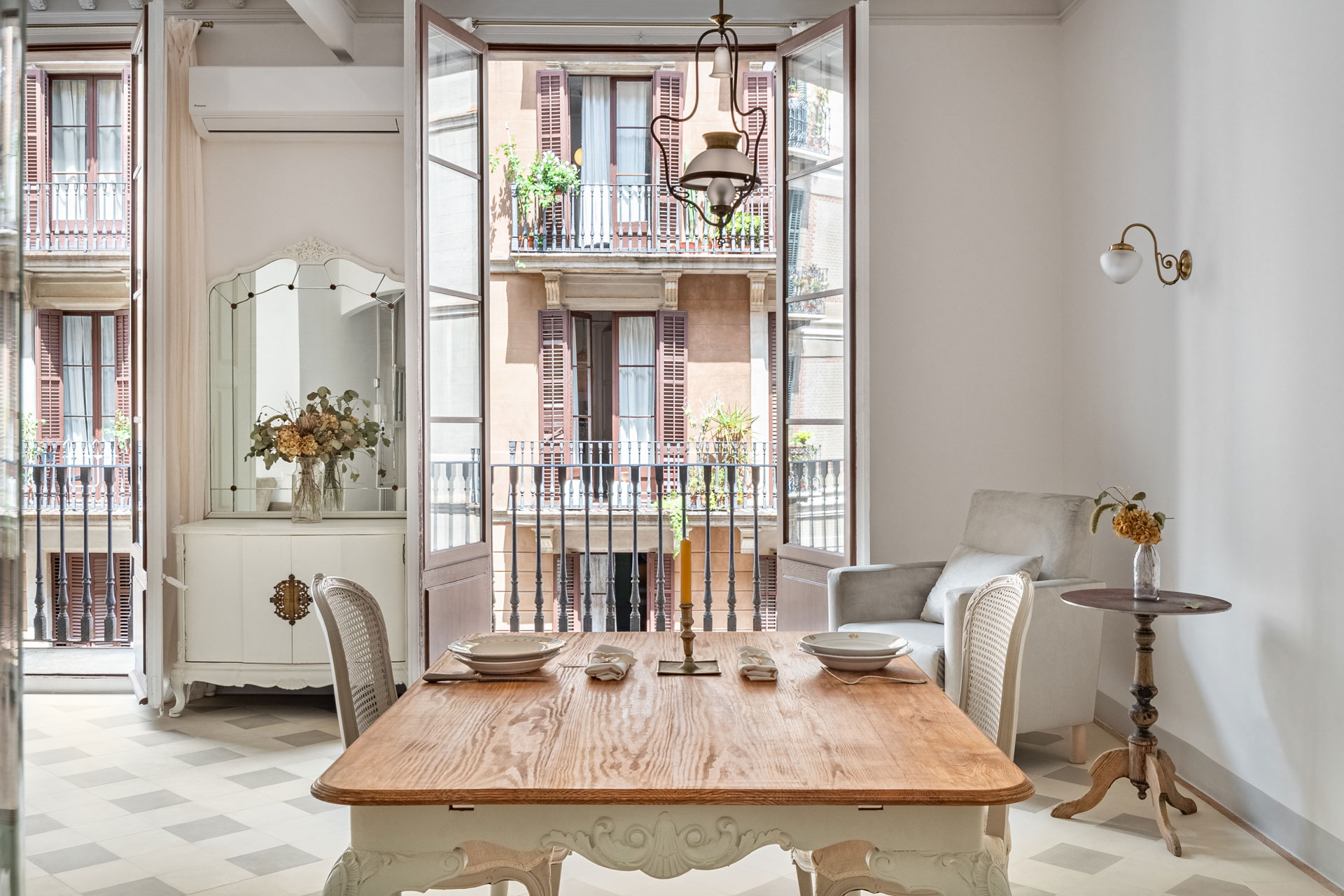Relocating across continents is never simple. When you’re an American family moving to Valencia, the questions pile up fast: How does the school system work? Which neighborhoods are safe and family-friendly? Can we keep our lifestyle, or will everything need to change? Choosing a new country is one thing—choosing a city, a neighborhood, and a way of life is another. And when that city is Valencia, with its unique blend of Mediterranean culture, administrative complexity, and real estate nuance, expert guidance becomes essential.
At Livin’Valencia, we’ve guided hundreds of families through the complexities of relocating to Valencia. And while each family’s journey is unique, we’ve seen consistent themes emerge—especially for those coming from the U.S. This guide is crafted specifically for American families planning to relocate to Valencia, with practical, real-life insights grounded in our daily work.
Why Valencia? The Spanish City That Fits American Family Life
Many of our American clients first consider Madrid or Barcelona. But after a closer look, Valencia often becomes the clear winner. Why?
- Size and pace: Large enough to offer international schools, top-tier healthcare, and cultural life—yet manageable in size, with less congestion and more green spaces.
- Cost of living: Significantly more affordable than other major cities, without sacrificing quality.
- Safety and education: A reputation for being clean, safe, and welcoming, with excellent private school options.
- Lifestyle: A Mediterranean rhythm that encourages more balance, community life, and family time.
For Americans used to car-dependent suburban life or fast-paced metropolitan environments, Valencia offers an unexpected blend of both.
Understanding the Process: How Livin’Valencia Helps American Families Relocate
Moving to Valencia is more than shipping boxes and booking flights. Our clients arrive with different goals—retirement plans, work relocations, long-term travel experiments—and we tailor the journey accordingly.
Here’s how Livin’Valencia makes the process smooth, ethical, and structured:
- Pre-arrival consulting: We help you define your objectives, clarify legal pathways (visas, NIE, TIE), and understand what the Spanish system expects from American nationals.
- Area guidance and property search: We don’t sell properties, so our advice is fully buyer-focused. We assist in identifying the best neighborhoods or suburbs, based on your lifestyle and schooling preferences.
- School selection and orientation: From Montessori programs to IB curriculum, we guide you through the application calendar, availability, and in-person or remote visits.
- Administrative and legal setup: Banking, insurance, empadronamiento (town hall registration), and the NIE/TIE process are all areas where American families often feel overwhelmed. We’re here to coordinate each step.
- Cultural onboarding: Understanding how Spanish systems work (from healthcare to grocery stores) is just as important as legal paperwork. We act as your first anchor in the city.
This approach—focused, clear, and tailored—is especially valuable for Americans who are not familiar with the slower administrative pace in Spain or the multi-layered structure of Spanish real estate and education.
Where American Families Feel at Home: A Walk Through Valencia’s Most Livable Areas
One of the first realizations American families have when considering a move to Valencia is how varied the city feels depending on where you are. The difference between a 100-year-old apartment in the old town and a modern villa in a leafy suburb is more than just architecture—it’s a lifestyle shift. And that’s precisely what makes Valencia so compelling: it offers real choice.
When we work with families from the U.S., one of our first steps is mapping these choices to who they are. Do they want to walk their kids to school? Host barbecues on weekends? Be close to culture? Or simply have more space and silence? There’s no one-size-fits-all answer, but here’s what we see working best for American families based on real-life needs and experiences.
Valencia City Center: The Energy of Walkable Living
Many American families are initially drawn to the city center, imagining it as a Spanish version of Manhattan or Boston’s Back Bay. But the feel is different here. Valencia’s historic districts—like Ruzafa, Ensanche, Gran Vía, and El Carmen—are deeply rooted in European urban planning: walkable, communal, and layered with history.
- Ruzafa is Valencia’s artsy, multicultural hub. Once a working-class neighborhood, it has transformed into a vibrant zone filled with third-wave coffee shops, bookstores, yoga studios, and organic grocers. It’s also one of the densest neighborhoods in terms of foreign residents. American families who land here tend to be those who enjoy a lively pace of life, want access to everything on foot, and value diversity and design.
- Ensanche and Gran Vía are slightly more polished—think early 20th-century buildings with wrought-iron balconies, high ceilings, and mature tree-lined avenues. Many U.S. families relocating from East Coast cities feel comfortable here thanks to its balance between elegance and practicality. Supermarkets, schools, language academies, and medical clinics are all a short walk away.
- El Carmen, in the old town, is often more picturesque than practical for families. Cobblestones, narrow streets, and converted palaces can be charming, but parking is difficult and larger apartments are rare. That said, some families love the authenticity and proximity to museums, festivals, and traditional Spanish life.
But a word of caution: space is limited. Apartments are often compact, with fewer bathrooms than U.S. families are used to. Elevators are not always a given. And yes, street parking is a daily challenge.
Still, for those who want to be immersed in city life—with the ability to get around by foot, bike, or tram—the center delivers. Many American families living here don’t own a car, or use it only for weekend escapes. In some cases, families opt to rent or buy a small city apartment as a primary residence, while maintaining a countryside property for school holidays or summer breaks.
Valencia’s Suburbs: Where Comfort Meets Connection
The search for space, tranquility, and schools often brings American families slightly outside the city—to places like L’Eliana, Rocafort, and La Cañada. These are not sleepy exurbs. They’re connected, lively, and increasingly international. And they often remind American clients of suburban areas outside Austin, Atlanta, or Los Angeles—albeit with a Mediterranean flair.
- L’Eliana is known for its family-oriented vibe. Life revolves around the town square, weekend markets, and an excellent public sports infrastructure. It’s one of the few places where you can walk your kids to both the park and their bilingual school, grab a cortado at a local café, and still get to Valencia in under 30 minutes by metro. Properties tend to have gardens, pools, and space for guests or home offices.
- Rocafort, just north of the city, is more compact but highly sought-after for its proximity to international schools. The feel here is more “old money”—quiet streets, discreet villas, and access to Santa Bárbara, one of the region’s most exclusive gated urbanizaciones. American families often appreciate Rocafort’s blend of elegance and accessibility.
- La Cañada, part of the Paterna municipality, is spread out and residential, with wide avenues, pine trees, and strong local amenities. It’s a favorite for those who want the “American-style” home—single-family houses with yards, outdoor kitchens, and space for dogs. The atmosphere is relaxed but connected. Many residents commute into the city for work or school.
A key advantage of these suburbs is their proximity to international schools (more on that later). The daily logistics of family life—school runs, after-school activities, commuting—become much more manageable when you’re near these campuses.
Homes in these areas usually start around €400,000, with newer builds or gated communities starting higher. In consolidated residential zones, especially near top schools or metro stations, prices have continued to rise. €600,000+ is common for move-in-ready family homes with a pool.
Gated Communities and Exclusive Enclaves: Santa Bárbara & Los Monasterios
Some American families—especially those relocating from gated communities in Florida, California, or Texas—ask specifically for private residential developments that provide security, community, and private amenities. In Valencia, that translates to urbanizaciones like Santa Bárbara (Rocafort) and Los Monasterios (Puzol).
These communities were initially developed in the 1970s and 80s for affluent Valencian families looking for weekend or summer homes outside the city. Today, they are fully residential, with a growing population of expat families who appreciate the infrastructure, privacy, and international feel.
- Santa Bárbara sits just beyond Rocafort. It features 24/7 security, private roads, a members-only social club, and tennis courts. Architecture here varies from modern villas to classic Mediterranean homes with terracotta roofs. The community is tight-knit but discreet. It’s a place where kids bike freely and neighbors know one another.
- Los Monasterios, slightly further north in Puzol, offers a more elevated position with sea views, larger plots, and a distinctly international makeup. The community is favored by diplomatic families and executives relocating from the U.S. or northern Europe. It has one of the best private social clubs in the region, and excellent road access to both Valencia and the international schools nearby.
Within a 10–15-minute radius of these enclaves are several reputable schools: Caxton College, American School of Valencia (ASV), Cambridge House, and British School of Valencia (BSV)—all of which we work with closely when coordinating school visits and enrollment support.
These communities come at a price: entry-level homes usually start around €600,000, and newer or larger properties often exceed €1 million, especially in Los Monasterios. However, for American families looking for space, safety, and community, these areas often strike the right balance.
Choosing the Right School: Private and International Options for American Kids
Education is one of the most critical aspects for American families moving to Valencia. Whether you’re looking for continuity with the U.S. system or hoping to broaden your child’s linguistic and cultural fluency, Valencia delivers.
Top private and international schools include:
- American School of Valencia (Puzol) – Follows an American curriculum and offers the IB diploma.
- Caxton College (Puçol) – British curriculum with Spanish integration; strong academic performance.
- British School of Valencia (in town) – Centrally located, high demand, modern facilities.
- Cambridge House (Rocafort) – A long-established British school near popular residential zones.
- Colegio Alemán and Lycée Français – For those exploring multilingual paths.
- And many more…
School admissions can be competitive, and we always recommend starting the process early—sometimes up to a year in advance. We assist with paperwork, contact with the school, and ensure that expectations align with the Spanish calendar (which differs from the American one).
Legal Residency & Visas: What U.S. Families Should Know
Spain offers various visa pathways for Americans, from the Non-Lucrative Visa (NLV) to Student Visas and Family Reunification options. The Golden Visa has been discontinued as of 2025, but other legal options remain valid and viable.
Livin’Valencia collaborates with trusted Spanish immigration lawyers who specialize in American clients. While we do not provide legal services ourselves, we coordinate the entire journey—connecting you with the right experts while ensuring that your relocation timeline stays on track.
Real Estate and Renting in Valencia: What to Expect
Whether you’re planning to buy or rent, navigating the property market in Valencia as an American family requires adjusting to a different set of norms and expectations. The systems in place—both legally and culturally—can feel quite foreign at first. That’s where our role as independent advisors becomes essential: we help you understand the context, ask the right questions, and avoid common traps.
Key difference to understand: Unlike in the U.S., Spanish real estate agents typically represent the seller or the landlord—not the buyer or tenant. That means their loyalty and interests may not align with yours. At Livin’Valencia, we do not sell or list properties. Our only priority is you—whether you’re renting for the first year or preparing for a long-term investment.
For Families Planning to Buy
If you’re ready to buy, or considering a medium-term purchase after renting, our buyer advisory service becomes even more critical.
The buying process in Spain involves:
- Legal due diligence: Confirming the property is free of debt, properly registered, and legally constructed.
- Contract negotiation and deposit: Typically 10% down once a private agreement is signed.
- Notary and registry: All property purchases must be notarized and officially registered—procedures that require careful coordination.
- Banking and financing: Spanish mortgages are available to foreigners, but the process is not always straightforward. We connect you with trusted financial advisors if needed.
Purchase price examples (updated to reflect 2025 trends):
- City apartments:
- €350,000–€700,000 for family-friendly 3–4 bedroom flats in areas like Gran Vía, Ruzafa, or Campanar.
- Modernized penthouses or historic properties with lift access can go significantly higher.
- Suburban homes:
- From €400,000 in L’Eliana or La Cañada.
- €600,000+ in Rocafort and other consolidated areas with easy school access.
- Luxury villas and gated urbanizaciones:
- Santa Bárbara, Los Monasterios, and similar enclaves typically start at €600,000.
- Large villas with sea views, extensive grounds, or high-end finishes often exceed €1.2M.
Buying real estate in Spain also comes with associated costs—roughly 12–15% of the purchase price, including taxes, notary fees, real estate agency fees when applicable, and legal expenses. These are often underestimated by new arrivals. We help families plan for this full cost upfront to avoid surprises.
We provide clarity at every step—helping you avoid pitfalls, understand taxes (including Wealth Tax and fiscal residency rules), and coordinate financing or escrow with trusted partners.
For Families Looking to Rent in Valencia
Renting is a practical and often preferred option for American families in their first year—especially those who want to test out different neighborhoods, wait for school placements, or get a better feel for the city before buying.
Here’s what to expect:
- Lease terms: Most rental contracts are for a minimum of 12 months. Some shorter-term leases exist but are often more expensive or targeted at tourists.
- Deposits: Standard is one or two months of rent as a deposit, plus agency fees (usually equivalent to one month’s rent). Some landlords may ask for additional guarantees if you’re newly arrived without Spanish income.
- Furnished vs. unfurnished: Both are available, but “furnished” can vary—some homes come with only the basics.
- Utilities: These are rarely included in the rent and are set up under the tenant’s name. We assist with that process as part of our relocation support.
- Contract language: Most leases are in Spanish, and clauses vary. We review all contracts with you to make sure obligations and protections are clearly understood.
Rental price ranges (based on recent data and real-world cases from our clients):
- City apartments:
- €1,500–€3,000/month for a 2–3 bedroom in central family-friendly areas like Ruzafa, Ensanche, or El Pla del Remei.
- Larger 4-bedroom apartments with lifts and parking are rarer and usually exceed €3,000/month.
- Suburban houses (L’Eliana, Rocafort, La Cañada):
- Detached homes with a garden and pool start around €2,000–€3,500/month.
- Newer or renovated villas in prime zones can exceed €3,500/month.
- Exclusive gated communities (Santa Bárbara, Los Monasterios):
- Rentals here are more limited but typically start around €3,500/month for a mid-size home and go well beyond €5,000 for larger properties or luxury estates.
We guide families through every step of the rental process—from pre-screening properties and liaising with agents to ensuring legal clarity in the lease.
Everyday Life: Healthcare, Groceries, Utilities and Beyond
Adjusting to Spanish life takes time, but many American families find it refreshingly human. Medical care is excellent (both public and private), food quality is high, and social life often revolves around kids’ activities, weekend outings, and long dinners.
Livin’Valencia assists with:
- Health insurance setup (required for most visa types).
- Registration with family doctors or pediatricians.
- Mobile phone, utilities, and banking setup.
- Town hall registration (Padrón) and Social Security number when applicable.
What Makes Our Approach Different
We’re not relocation “concierges”—we’re strategic advisors with years of experience helping expats make well-informed decisions. Our services are fully customized and transparent.
Some families want end-to-end relocation management. Others simply need expert guidance during their scouting trip. Whatever your needs, we structure our services accordingly—whether you’re still in New York planning your move or already in Spain looking for the right long-term neighborhood.
Final Thoughts: Is Moving to Valencia Right for Your Family?
Relocating to Valencia as an American family is a major step—but one that many of our clients never regret. With the right preparation, guidance, and a partner like Livin’Valencia by your side, the move becomes less of a leap and more of a transition.
We help you build a life, not just plan a move.
Considering a move to Valencia?
Book your free 15-minute call with us and start your journey with confidence.




